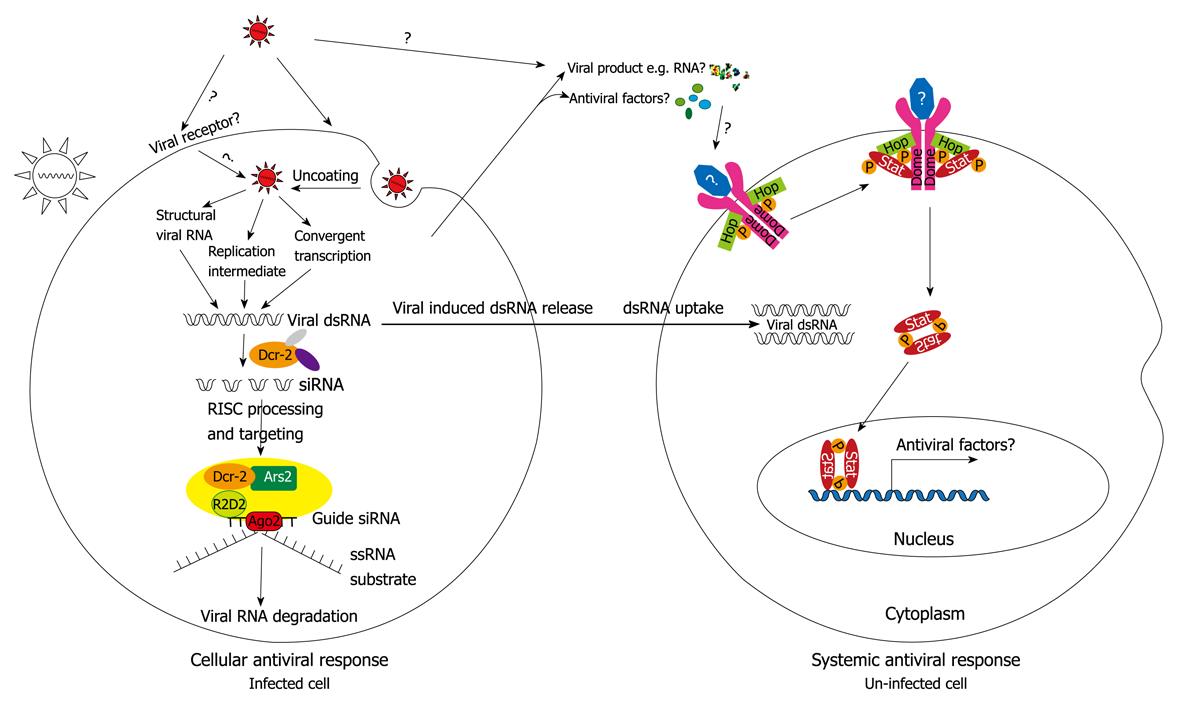Copyright
©2010 Baishideng Publishing Group Co.
World J Biol Chem. May 26, 2010; 1(5): 151-159
Published online May 26, 2010. doi: 10.4331/wjbc.v1.i5.151
Published online May 26, 2010. doi: 10.4331/wjbc.v1.i5.151
Figure 2 Local (cellular) and systemic anti-viral response in Drosophila.
In local anti-viral response, the viral particle infects host cell via endocytosis or is taken up by host receptor yet to be identified. Upon infection, viral RNA is processed to dsRNA[63], which evokes RNAi pathway response. The activation of the RNAi pathway, specifically small interfering RNA (siRNA) pathway, leads to the RNA-induced silencing complex (RISC)/siRNA-mediated degradation of viral RNA. It appears that the viral dsRNA can be taken up by un-infected neighboring cells to spread protective RNAi. The other systemic anti-viral mechanism is mediated by the JAK/STAT pathway. The infected cells produce signals that activate the JAK/STAT pathway by currently unknown mechanisms and lead to production of antiviral factors.
-
Citation: Wang JH, Valanne S, Rämet M.
Drosophila as a model for antiviral immunity. World J Biol Chem 2010; 1(5): 151-159 - URL: https://www.wjgnet.com/1949-8454/full/v1/i5/151.htm
- DOI: https://dx.doi.org/10.4331/wjbc.v1.i5.151









